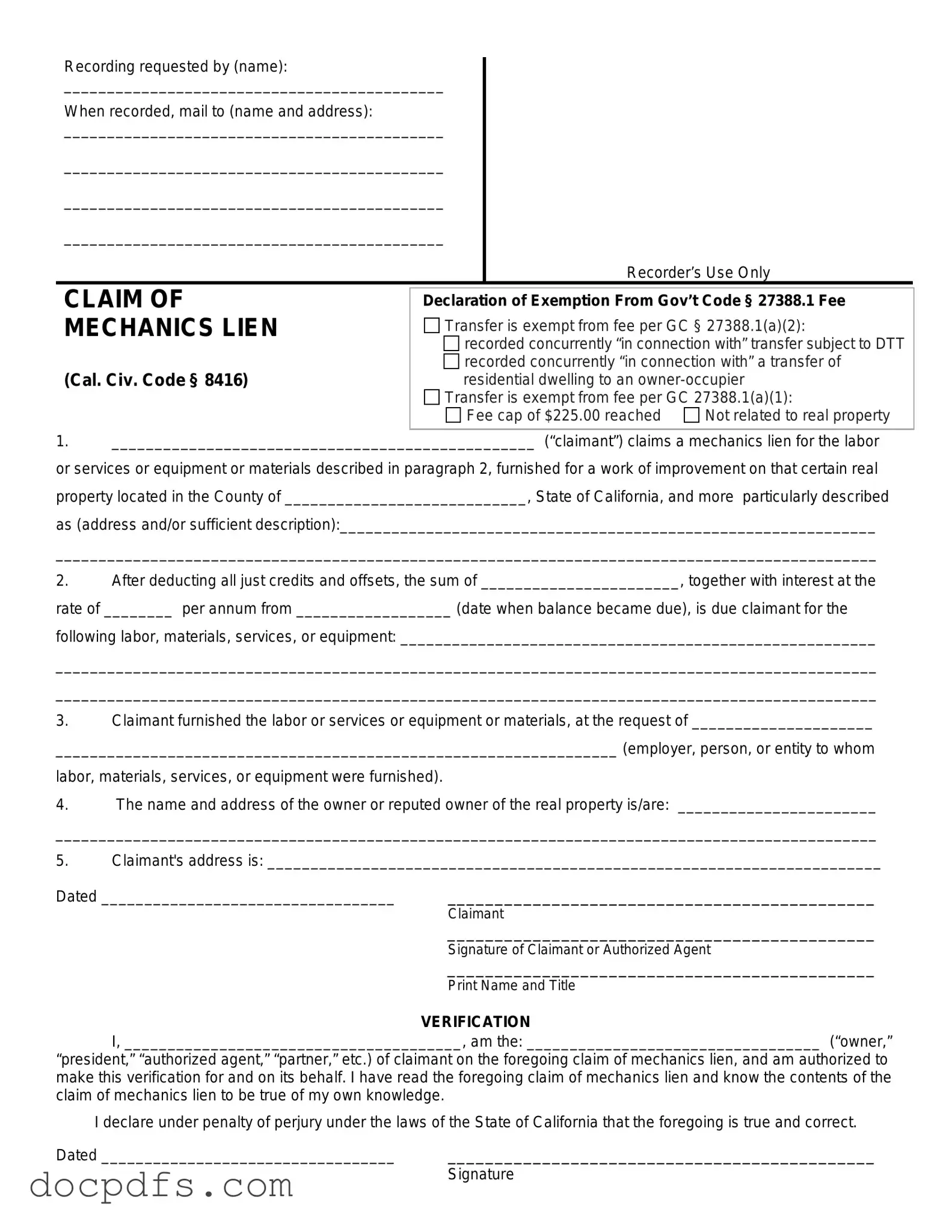What is a Mechanics Lien in California?
A Mechanics Lien is a legal claim against a property for unpaid work or materials supplied during construction or renovation. In California, this lien allows contractors, subcontractors, suppliers, and laborers to secure payment for their services or materials. If the debt remains unpaid, the lien can lead to a foreclosure on the property.
Who can file a Mechanics Lien in California?
In California, various parties can file a Mechanics Lien, including:
-
General contractors
-
Subcontractors
-
Material suppliers
-
Laborers
Each party must meet specific criteria and follow the required procedures to file a valid lien.
What is the deadline for filing a Mechanics Lien in California?
The deadline for filing a Mechanics Lien in California generally depends on the type of work performed. Typically, the lien must be filed within 90 days of the completion of work or the last delivery of materials. However, if a Notice of Completion or Notice of Cessation is filed, the deadline may change to 60 days from the date of filing.
The Mechanics Lien form must include essential information such as:
-
The name and address of the property owner.
-
The name and address of the claimant (the person filing the lien).
-
A description of the property.
-
A statement of the amount owed.
-
The nature of the work performed or materials supplied.
-
The date when the work was completed or materials were supplied.
Providing accurate and complete information is crucial for the validity of the lien.
How do I serve a Mechanics Lien in California?
After filing the Mechanics Lien with the county recorder, the claimant must serve a copy of the lien to the property owner. This can be done through:
-
Personal delivery
-
Certified mail
It is essential to keep proof of service, as it may be required in any future legal proceedings related to the lien.
Can a Mechanics Lien be removed?
Yes, a Mechanics Lien can be removed in several ways. The property owner may pay the debt, leading to the lien being released. Alternatively, the claimant can voluntarily remove the lien if the debt is settled. If the lien is disputed, the property owner may file a lawsuit to have it declared invalid, which can also result in its removal.
What happens if a Mechanics Lien is not resolved?
If a Mechanics Lien is not resolved, the claimant may initiate foreclosure proceedings against the property. This process can lead to the sale of the property to satisfy the debt. It is important for both claimants and property owners to address liens promptly to avoid further complications.
